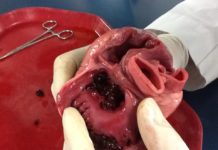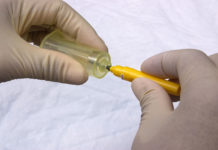
Cerebellum, a part of the hind brain also known as “little brain” may have hitherto unknown roles
A newly identified pathway connecting the cerebellum to the brain’s reward centers in mice could help scientists understand autism and addiction.
According to a new study, a dense fist-sized formation at the base of brain located at the back called cerebellum (latin for ‘little brain’) could play a major role in reward processing and social behaviors. The findings could potentially lead to new strategies for treating addiction.
The study was published online in the journal Science.
From the time french physiologist Marie Jean Pierre Flourens showed that the removal of cerebella in pigeons made them unbalanced, it has been thought that cerebellum was largely responsible for coordination of movements.
Previous studies had however hinted that the cerebellum is somehow involved in triggering release of the feel-good neurotransmitter dopamine in brain areas that receive rewarding stimuli.
THIS FINDING SUGGESTS THAT SOCIAL BEHAVIOR REQUIRES A FUNCTIONING CEREBELLUM-VTA PATHWAY AND THAT INTERFERENCE WITH THIS PATHWAY MAY BE A GLITCH THROUGH WHICH CEREBELLAR DYSFUNCTION CONTRIBUTES TO ASD
Researchers suspected that the cerebellum directly connected with and activated the ventral tegmental area (VTA), a nearby structure known to play a role in addiction. VTA neurons synthesize and release dopamine into the mesolimbic pathway, which mediates pleasure and reward.
In studies designed to test this hypothesis it was found that stimulating cerebellar neurons activates the VTA and leads to “addictive” behaviors in mice.
Using optogenetics, which involves inserting genes that produce light-sensitive proteins into select neurons, researchers were able to selectively activate or inactivate the treated neurons by exposing them to light.
For triggering the Reward Center, researchers conducted a so-called open-field chamber test, in which mice were free to explore any corner of a square enclosure. Each time a mouse reached a particular corner (randomly chosen for each mouse), cerebellar neurons linked to the VTA were optogenetically stimulated. If the mice found this stimulation pleasurable, they’d be expected to preferentially return to this corner (to get another rewarding flash of light) instead of to the other corners, and the rodents did return much more often than control animals.
The researchers then repeated the experiment- except this time, every other day for six days, mice were confined to the bright side for 30 minutes while cerebellar axons with connections to the VTA were optogenetically stimulated. After that initial conditioning period, the mice were allowed to freely explore the entire chamber.
“Even though mice normally shun bright areas, now they preferentially ran toward the light, because that’s where they remembered getting a reward,” said lead author Dr.Kamran Khodakhah professor and chair of the Dominick P. Purpura Department of Neuroscience. “This suggests that the cerebellum plays a role in addictive behaviors.” He notes that the results were “very similar” to findings in other studies in which mice confined to the bright part of chambers received addictive drugs such as cocaine instead of cerebellar stimulation.
To test the role of cerebellum in autism spectrum disorder (ASD), researchers placed mice in a three-chambered box in which they were free to travel to an inanimate object, another mouse or an empty chamber. The mice being studied typically spent most of their time socializing with another mouse, and when they did, cerebellar axons in their VTA were most active. Intriguingly, when the researchers optogenetically silenced cerebellar axons projecting into the VTA, the mice no longer preferred interacting with other mice. This finding suggests that social behavior requires a functioning cerebellum-VTA pathway and that interference with this pathway may be a glitch through which cerebellar dysfunction contributes to ASD.
In future studies, Dr. Khodakhah plans to test whether the cerebellum-VTA pathway can be manipulated, using drugs or optogenetics, to treat addiction and prevent relapse after treatment.












